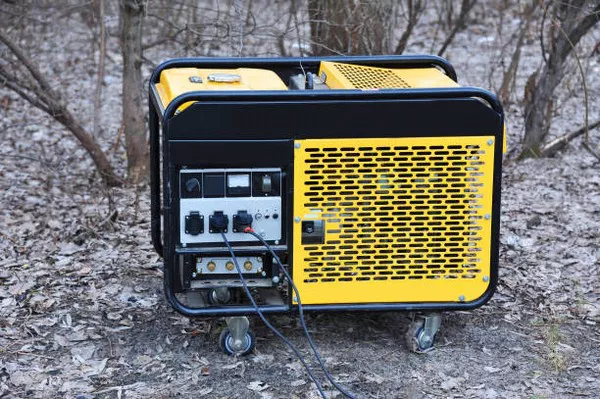Generators are invaluable tools for providing electricity during outages, powering tools at job sites, or supporting recreational activities. Understanding what a 5250-watt generator can power is essential for maximizing its utility and ensuring that you can meet your energy needs effectively. This article will delve into the capacity of a 5250-watt generator, the devices it can run, and important considerations for usage.
Understanding Generator Wattage
What is Wattage?
Wattage is a measure of electrical power. It indicates the amount of energy a device consumes when operating. Generators are rated by the total wattage they can supply continuously and temporarily.
Starting vs. Running Watts
Starting Watts: Many appliances require a surge of power when they start. This initial power requirement is known as starting or surge watts and is usually higher than the running wattage.
Running Watts: This is the power required to keep an appliance running after it has started.
A 5250-watt generator has a maximum output of 5250 watts, but it’s crucial to consider the difference between starting and running watts when planning what you can power.
What Can a 5250 Watt Generator Run?
A 5250-watt generator is suitable for various applications, from home backup power to outdoor activities. Below, we explore the types of devices you can run with this generator based on their wattage requirements.
1. Home Appliances
Many common household appliances can be powered by a 5250-watt generator, including:
Refrigerator: Typically requires 600-800 watts to run, with starting watts of about 1200-2000 watts.
Microwave Oven: Generally needs 600-1200 watts, with starting watts around 1500 watts.
Television: Can vary, but most flat-screen TVs use about 100-400 watts.
Lighting: Standard LED bulbs use about 10-20 watts each, so you can run many lights simultaneously.
Sump Pump: Usually requires about 800-1200 watts, with higher starting wattage.
2. Heating and Cooling Systems
Depending on the size and type, heating and cooling systems can also be powered:
Portable Air Conditioner: Most units require 800-1500 watts, with starting wattage potentially reaching 2000-3000 watts.
Electric Heater: Can use between 1500-2000 watts.
Fan: Typically consumes around 75-150 watts.
3. Tools and Equipment
For outdoor activities or construction sites, a 5250-watt generator can power various tools, such as:
Circular Saw: Requires about 1200-1800 watts to start.
Drill: Usually needs around 300-600 watts.
Air Compressor: Can range from 1000 to 2000 watts depending on the model.
4. Recreational Vehicles and Camping
If you enjoy outdoor activities, this generator can support various recreational needs:
RV Appliances: Many RVs can be powered with a generator, including lights, refrigerator, and air conditioning, but be mindful of the total wattage.
Camping Gear: You can run electric coolers, lights, and charging devices.
Calculating Your Power Needs
How to Determine Wattage Requirements
To effectively use a 5250-watt generator, it’s essential to calculate the total wattage needed for your devices:
List All Devices: Make a list of the devices you plan to use.
Check Wattage Ratings: Find the running and starting wattage for each device, usually found on the appliance label.
Add Up Running Watts: Calculate the total running wattage required.
Consider Starting Watts: Add the highest starting wattage to your total running watts to determine if it falls within the generator’s capacity.
Example Calculation
Suppose you want to run the following devices:
Refrigerator: 800 watts (1200 starting)
Microwave: 1000 watts (1500 starting)
10 LED lights: 100 watts total
Portable fan: 100 watts
Total Running Watts: 800 + 1000 + 100 + 100 = 2000 watts
Total Starting Watts: 1200 + 1500 + 100 + 100 = 2900 watts
In this case, a 5250-watt generator can comfortably handle these devices.
Important Considerations
Fuel Type
Most 5250-watt generators operate on gasoline, but some can run on propane or dual-fuel. The choice of fuel can affect performance and runtime, so consider your specific needs.
Runtime and Efficiency
The runtime of a generator depends on its fuel tank size and load. Running the generator at or near its capacity will reduce the overall runtime. Ensure you understand how long your generator can run on a full tank under load.
Maintenance
Regular maintenance is vital for keeping your generator in good working order. Check oil levels, fuel quality, and filters regularly to ensure optimal performance.
Safety Precautions
Ventilation: Always operate your generator in a well-ventilated area to avoid carbon monoxide buildup.
Grounding: Ensure the generator is properly grounded to prevent electrical shock.
Load Management: Never exceed the generator’s wattage capacity to avoid damage or hazards.
Conclusion
A 5250-watt generator is a versatile power source suitable for various applications, from home backup to outdoor adventures. By understanding its capabilities and carefully calculating your power needs, you can ensure that your generator meets your demands effectively. Always prioritize safety and maintenance to keep your generator running smoothly for years to come.
With the right planning, a 5250-watt generator can provide the reliability and power you need in any situation.
Related topics:

